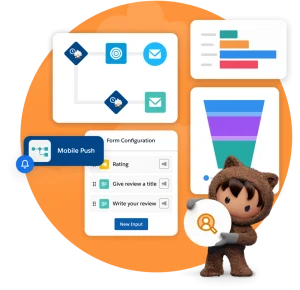Beyond the Screen: How AR and VR Are Rewriting the Rules of Product Demos

Let’s be honest. The traditional product demonstration is… a bit tired. A salesperson clicks through a PowerPoint. A video plays on a loop. Maybe, if you’re lucky, there’s a physical sample. But it’s all so passive. So two-dimensional.
What if you could place a life-sized, photorealistic version of a new industrial machine right on your factory floor—before you’ve even signed a purchase order? Or “try on” a custom-configured luxury car and feel the virtual leather of the steering wheel? This isn’t science fiction. This is the new reality of product demonstrations, powered by Augmented Reality (AR) and Virtual Reality (VR).
Untangling the Tech: AR vs. VR for Demos
First, a quick, painless distinction. It’s easy to lump them together, but they play different, equally powerful roles.
Augmented Reality (AR): The Digital Overlay
Think of AR as a digital layer on top of your real world. You use your smartphone, tablet, or smart glasses to see computer-generated images integrated into your actual environment. It’s perfect for contextual visualization. IKEA’s app, which lets you see how a sofa looks in your actual living room, is a classic example. AR answers the question: “How will this fit and look in my space?”
Virtual Reality (VR): The Total Immersion
VR, on the other hand, is a complete escape. By putting on a headset, you’re transported to a fully digital environment. This is where you can conduct a virtual product walkthrough of something massive or complex—like a yacht, a building HVAC system, or a surgical device. VR answers the question: “What is it like to actually be with and use this product?”
The Tangible Business Benefits: It’s More Than Just a “Wow” Factor
Sure, the “cool” factor is high. But the real value lies in solving concrete business problems. Here’s the deal:
- Slash Costs, Amplify Reach: No more shipping heavy prototypes or sending sales teams across the globe for a single meeting. A single VR demo can be distributed infinitely. The savings on logistics and physical materials are, frankly, staggering.
- Supercharge Customer Understanding: People remember 10% of what they hear and 20% of what they read. But they remember a whopping 90% of what they do. Interactive AR/VR experiences create a visceral, “muscle memory” understanding that a brochure could never achieve.
- Democratize the Complex: Got a product with a thousand moving parts? AR can annotate the real thing, highlighting features as a user looks at it. VR can let someone safely “disassemble” a complex engine to see how it works from the inside out. You make the complicated beautifully simple.
- Drive Confidence and Close Deals Faster: When a client has virtually experienced your product in their own space or in a realistic simulation, their buying anxiety plummets. They know exactly what they’re getting. This reduces hesitation and dramatically shortens sales cycles.
AR/VR in the Wild: Real-World Use Cases That Sing
This isn’t theoretical. Companies are already reaping the rewards. Let’s look at a few.
Retail and E-commerce
We mentioned IKEA. But imagine trying on makeup virtually with Sephora’s app, or seeing how a new pair of Nike sneakers looks on your feet from every angle. These interactive product visualization tools are crushing the “will it look good on me?” dilemma that drives high cart abandonment rates.
Manufacturing and Heavy Industry
This is where it gets serious. A company like Boeing uses AR glasses to guide technicians through miles of complex wiring, overlaying digital schematics directly onto the physical aircraft. It’s like having a super-smart expert looking over your shoulder, pointing exactly where each wire goes. This reduces errors by a huge margin.
Real Estate and Architecture
Instead of building a multi-million dollar physical model, architects create VR walkthroughs of unbuilt skyscrapers. Clients can walk through their future apartment, change the time of day to see the light, even choose finishes in real-time. It’s a powerful, emotional sell.
Getting Started Without Breaking the Bank
Okay, you’re sold. But you might be thinking, “This sounds expensive and complicated.” Well, it doesn’t have to be. The barrier to entry is lower than ever.
| Approach | Best For | Considerations |
| Smartphone/Tablet AR | E-commerce, marketing campaigns, simple visualization | Lowest cost; leverages devices customers already own. |
| Web-Based AR/VR | Reaching the widest audience with no app download | Easily shareable via link; quality is rapidly improving. |
| Dedicated VR Headsets | High-fidelity training, complex product walkthroughs | Highest immersion; requires hardware investment. |
Start small. Maybe it’s a simple AR filter for your social media. Or a 360-degree video that gives a basic sense of presence. The key is to just… start. Test, learn, and iterate.
The Human Connection in a Digital Space
A potential pitfall, you know, is focusing too much on the tech and forgetting the people using it. The goal isn’t to replace human interaction but to enhance it. The most successful implementations use AR/VR as a tool to facilitate better conversations.
A sales rep can guide a client through a VR demo, answering questions in real-time. An AR manual can empower a field technician to solve a problem independently, making them feel more capable. It’s about empowerment, not replacement.
The Future is Already Here
We’re standing at the edge of a fundamental shift. The line between the physical and digital is blurring, and for product demonstrations, that’s a fantastic thing. It’s moving us from simply telling customers about a product to letting them truly experience it.
The question is no longer if this technology will become standard, but how quickly your competitors will adopt it. The old demo is fading to black. A richer, more immersive, and frankly, more human way of connecting with products is taking its place.







